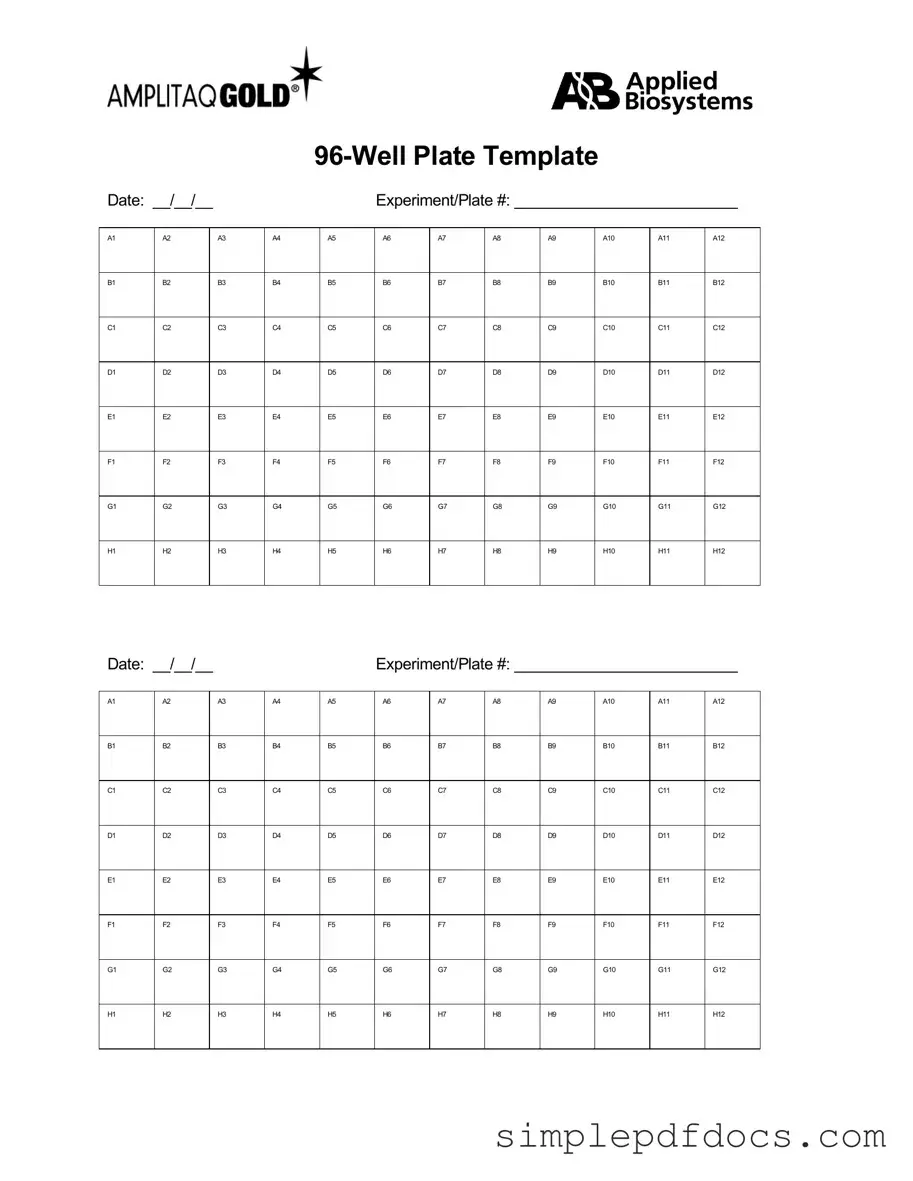Fill Your 96 Well Form
The 96 Well form is a standardized template used primarily in laboratory settings for organizing and recording sample information across 96 wells in a microplate. This form facilitates efficient data collection and management, ensuring that researchers can easily track their experiments. By streamlining the documentation process, the 96 Well form enhances accuracy and productivity in scientific research.
Get Document Here
